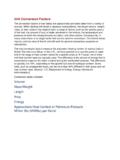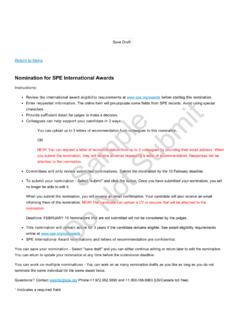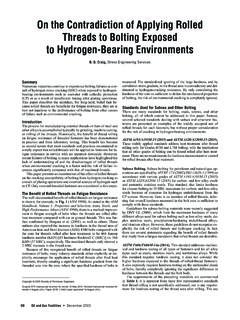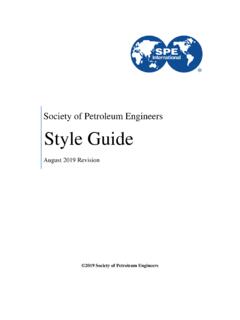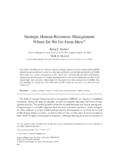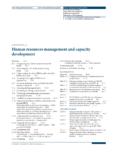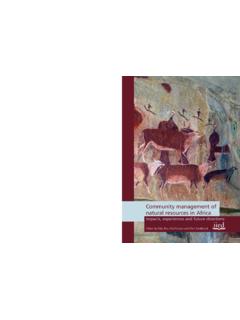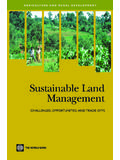Transcription of SPE Petroleum Resources Management System Guide for …
1 1 SPE Petroleum Resources Management System Guide for Non-Technical Users _____ This Guide is to help non-technical users understand how the Petroleum industry assesses and quantifies the major driver of value for exploration and production companies oil and natural gas reserves and Resources . Clear terms and definitions that result in reliable and easily comparable reserves estimations are essential for investors, regulators, governments and consumers not only in assessing a Petroleum company s current and future value, but in determining the outlook for the world s energy supply. Completed in 2007, the PRMS provides updated definitions and the related classification System for Petroleum reserves and Resources that reflect advances in technology, the international expansion and the increasing role of unconventional Resources in the industry. These updated definitions establish a universal language which can be used for estimating and classifying quantities of oil and gas discovered in a reservoir.
2 SPE s Role in Developing the PRMS For decades, the SPE has been a leader in developing the technical definitions that have become the industry standard for evaluating Petroleum reserves and Resources . The SPE historically draws together the scientific and engineering expertise of the global oil industry in this effort. The PRMS is the result of more than two years of collaboration by the SPE, the World Petroleum Council (WPC), the American Association of Petroleum Geologists (AAPG) and the Society of Petroleum Evaluation Engineers (SPEE), with considerable input from the industry at large. The new System builds on the previous set of definitions and incorporates best practices identified in other international Petroleum and mineral classification systems. These technical definitions are offered for any company, agency, country or other stakeholder to use. Fundamentals of the PRMS Oil and gas reserves and Resources are defined as volumes that will be commercially recovered in the future.
3 Unlike the inventory of a manufacturing company, reserves are physically located in reservoirs deep underground and cannot be visually inspected or counted, but rather are estimates based on the evaluation of data that provides evidence of the amount of oil and gas present. There is no definitive answer until the end of a reservoir's producing life. All reserve estimates involve some degree of uncertainty. The estimation of reserves volumes is generally performed by highly-skilled individuals who use their experience and professional judgment in the calculation of those volumes. To take into account this uncertainty, the PRMS incorporates a central framework that categorizes reserves and Resources according to the level of certainty associated with their recoverable volumes (horizontal axis in the figure below), and classifies them according to the potential for reaching commercial producing status (vertical axis).
4 2 Contingent ResourcesReservesProductionProspectiveRe sourcesUnrecoverableDiscoveredSub-commer cialCommercialUndiscoveredUnrecoverablec hance of discoveryContingent ResourcesReservesProspectiveResourcesDis coveredSub-commercialCommercialUndiscove redCategorize based primarily on technical uncertainty of sales quantities associated with a projectchance of discoveryClassifyby Chance of Commerciality (Risk)of project appliedChance of Commerciality (Risk)of project appliedChance of Commerciality (Risk)of project appliedchance of developmentchance of developmentchance of developmentchance of discoveryPROVEDPROBABLEPOSSIBLE When applying PRMS, technical specialists must determine a specific project that will be used to recover the reserves and Resources and determine the chance that it will be commercially successful, then must estimate the volume expected to be recovered from the project. It is important to remember when applying the PRMS that, as shown above, reserves are a subset of Resources .
5 Differences in Classes (Vertical Axis) The four major recoverable Resources classes defined by the PRMS are production, reserves, contingent Resources , and prospective Resources . There is also a distinct class for unrecoverable Petroleum . These classes are shown on the vertical axis of the PRMS framework. Production is the quantity of oil and natural gas that has been recovered already (by a specified date). This is primarily output from operations that has already been produced for use by consumers. Reserves represent that part of Resources which are commercially recoverable and have been justified for development, while contingent and prospective Resources are less certain because some significant commercial or technical hurdle must be overcome prior to there being confidence in the eventual production of the volumes. 3 Contingent Resources are less certain than reserves. These are Resources that are potentially recoverable but not yet considered mature enough for commercial development due to technological or business hurdles.
6 For contingent Resources to move into the reserves category, the key conditions, or contingencies, that prevented commercial development must be clarified and removed. As an example, all required internal and external approvals should be in place or determined to be forthcoming, including environmental and governmental approvals. There also must be evidence of firm intention by a company s Management to proceed with development within a reasonable time frame (typically 5 years, though it could be longer). Prospective Resources are estimated volumes associated with undiscovered accumulations. These represent quantities of Petroleum which are estimated, as of a given date, to be potentially recoverable from oil and gas deposits identified on the basis of indirect evidence but which have not yet been drilled. This class represents a higher risk than contingent Resources since the risk of discovery is also added.
7 For prospective Resources to become classified as contingent Resources , hydrocarbons must be discovered, the accumulations must be further evaluated and an estimate of quantities that would be recoverable under appropriate development projects prepared. Some Petroleum will be classified as unrecoverable at this point in time, not being producible by any projects that the company may plan or foresee. While a portion of these quantities may become recoverable in the future as commercial circumstances change or technological developments occur, some of the remaining portion may never be recovered due to physical or chemical constraints in the reservoir. The volumes classified using the System represent the analysis of the day, and should be regularly reviewed and updated, as necessary, to reflect changing conditions. A project may have recoverable quantities in several resource classes simultaneously. As barriers to development are removed, some Resources may move to a higher classification.
8 One of the primary distinctions between Resources and reserves is that while Resources are technically recoverable, they may not be commercially viable. Reserves are always commercially viable and there is intent development them. Differences in Categories (Horizontal Axis) Within any resource class other than production, volumes are placed into different categories based on their certainty of eventually coming out of the ground. Decisions to upgrade volumes to any category within a class are generally based on the technical certainty of recovering the volumes. In this discussion, the focus is on the reserve class, as these volumes are commonly the focus of public discussions of oil and gas company producing assets. The highest valued category of reserves is proved reserves. Proved reserves have a reasonable certainty of being recovered, which means a high degree of confidence that the volumes will be recovered.
9 To be clear, reserves must have all commercial aspects addressed. It is technical issues which separate proved from unproved categories. Probable or possible reserves are lower categories of reserves, commonly combined and referred to as unproved reserves, with decreasing levels of technical certainty. Probable reserves are volumes that are defined as less likely to be recovered than proved, but more certain to be recovered than Possible Reserves . Possible reserves are reserves which analysis of geological and engineering data suggests are less likely to be recoverable than probable reserves. 4 The term 1P is frequently used to denote proved reserves, 2P is the sum of proved and probable reserves and 3P the sum of proved, probable and possible reserves. The best estimate of recovery from committed projects is generally considered to be the 2P sum of proved and probable reserves. Note that these volumes only refer to projects that are currently justified for or already in development.
10 Total value of any resource base must include an assessment of the contingent and prospective Resources as well as reserves. In order for volumes to move from one category to the next, the technical issues which cause them to be placed in less certain categories must be resolved. In the majority of cases, this requires that additional data must be obtained before any greater certainty can be recognized. This may include, among other things, the drilling of additional wells, the monitoring of current production to better understand performance or the implementation of a pilot to have greater confidence in the volumes that full scale development projects may eventually produce. Conclusion The PRMS is designed to provide a framework for the classification of oil and gas volumes which a company may have associated with its portfolio of assets. It is not specific to any particular geographic location and can be applied to both conventional and unconventional reserves and Resources anywhere in the world, in any fiscal regime.



